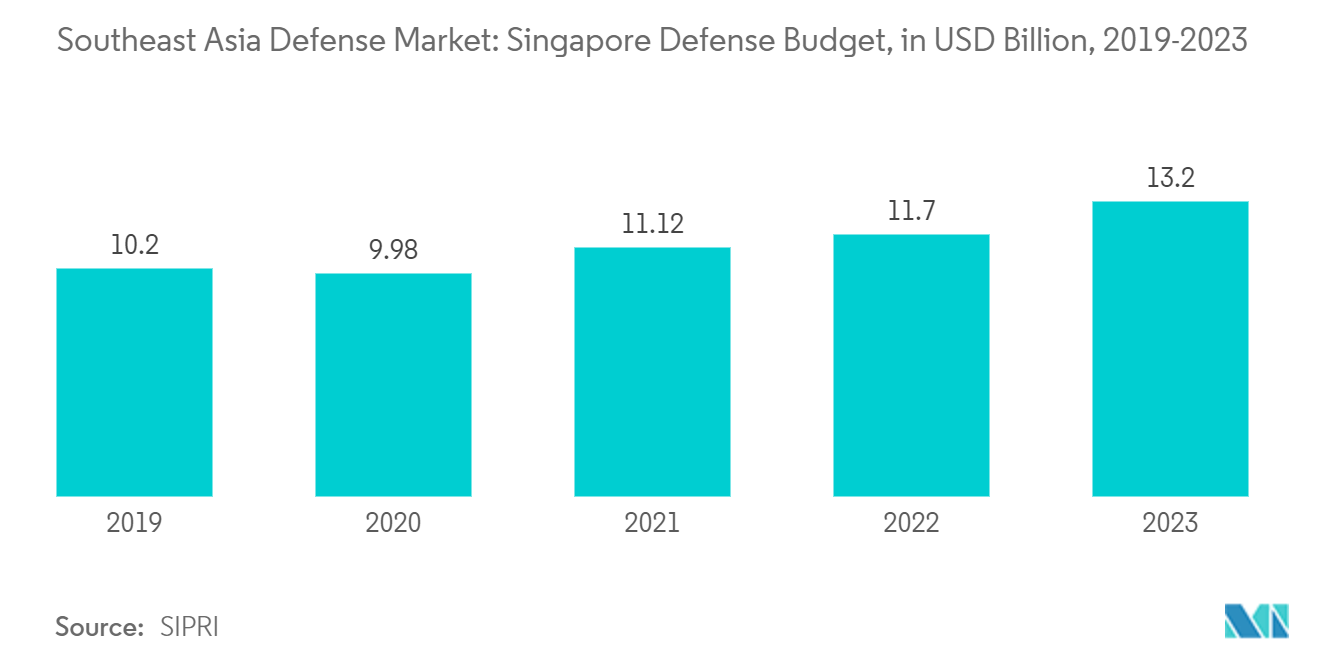Market Trends of Southeast Asia Defense Industry
The Navy Segment to Showcase Remarkable Growth During the Forecast Period
After a period of robust growth, several Southeast Asian nations are bolstering their military prowess. They focus on safeguarding vital assets, particularly shipping lanes, ports, and maritime boundaries crucial for exports and supply chains. Additionally, they aim to uphold their territorial integrity amid a rapidly evolving security environment. Southeast Asia has deep economic ties with China, yet its defense interactions are hampered by China's assertiveness in the South China Sea, leading to tensions, notably with Vietnam and the Philippines.
Given that the well-being of Southeast Asian nations hinges on unimpeded sea access, maritime security is a top concern. The region's naval forces face a myriad of challenges, ranging from terrorism and smuggling to human and drug trafficking. Aging equipment is spurring demand for naval upgrades. For instance, in March 2023, ST Engineering Marine, a subsidiary of ST Engineering, secured a contract to build six Multi-role Combat Vessels (MRCVs) for the Republic of Singapore Navy (RSN). In April 2024, Thyssenkrupp Marine Systems unveiled the fourth submarine under the Type 218SG program. Moreover, ThyssenKrupp Marine Systems and ST Engineering have inked a pact to bolster the capabilities of Singapore's Type 218SG submarines throughout their service lives.
Given the array of potential challenges, Southeast Asian fleets are honing their capabilities for both peacetime operations and potential conflicts. This strategic focus is poised to propel the naval segment in the coming years.

Singapore Projected to Dominate the Market During the Forecast Period
During the forecast period, Singapore is projected to maintain its market dominance, driven by heightened defense spending and an increased procurement of advanced weaponry. In 2023, Singapore allocated USD 13.2 billion to its defense budget, marking a 1.4% rise over the previous year. Notably, the Singapore Armed Forces (SAF) budget saw a substantial increase of around USD 509 million compared to 2022.
Singapore's defense expenditure is primarily fueled by concerns over terrorist threats, bolstering military capabilities through equipment acquisitions, overseas training programs, and active involvement in international peacekeeping and disaster relief efforts. For instance, in March 2023, the Singapore Army opted for Colt’s Infantry Automatic Rifles 6940 (IAR 6940) as its new section automatic weapon, replacing the long-serving ST Engineering’s 5.56 mm Ultimax 100 Mk2 light machine gun. The Colt’s 6940 rifle boasts a lighter build, a shorter barrel, and a higher fire rate than its competitor, Heckler & Koch's M27 5.56 mm IAR rifle.
Key players in Singapore's defense landscape, including Singapore Technologies Engineering Ltd, ST Engineering Land Systems Ltd, and Airbus Helicopters Southeast Asia Private Limited, are actively driving indigenous defense development. This, coupled with a surge in R&D investments, is propelling the country's defense market’s growth.


